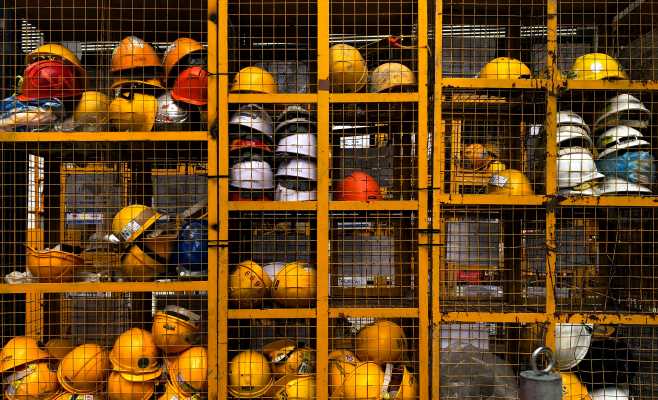Why business owners are taking occupational health and safety more seriously now than ever before.
In the next five years, inspectors from the government’s Department of Employment and Labour will visit 389 000 workplaces across South Africa.
Employment and Labour minister Thulas Nxesi announced in May that the inspections formed part of the state’s programme to ensure compliance with labour legislation, improve workplace conditions and ultimately protect workers.
Government findings show there were 36 000 compliant and 26 000 non-compliant employers in 2021, with the most common forms of non-compliance relating to general safety regulations, Covid-19 instructions, hazardous chemical regulations, environmental regulations and facilities regulations.
Because the Disaster Management Act required that organisations implement a Covid-19 policy, they have been forced to implement health and safety management systems to ensure they remain operational.
While the worst of the pandemic may be over, these systems are now entrenched and will need to be improved on to meet legal requirements. Businesses can no longer simply consider them a box to be ticked.
“If an organisation does not have a policy drafted, implemented and embedded in the management system, health and safety may not be taken seriously. This can lead to an increase in incidents and injuries, an increase in insurance policies, reputational damage, high employee turnaround, imprisonment and fines from the government,” says Van Zyl Krause, operations manager for South African ISO (International Organisation for Standardisation) training and implementation specialist WWISE.
The need for greater workplace safety is seeing an increasing number of organisations becoming certified through the ISO, which develops standards as a way of guaranteeing quality, safety and efficiency.
Currently, health and safety management systems based on the requirements of ISO 45001:2018 are in high demand.
“The ISO 45001:2018 standard requires an organisation to include the statutory and regulatory requirements in the system as well as the evaluations that are required to be done to ensure compliance with the legislative requirements. By implementing management systems based on the requirements of ISO 45001:2018, organisations are measured and tested on an international level.” Krause explains.
Within ISO 45001:2018 are a number of clauses that are pertinent to the establishment and effectiveness of the system:
- Clause 4 establishes the scope of the management system, identifying interested parties and the associated risks, as well as the organisation’s internal and external issues;
- Clause 5 addresses how top management can ensure that a process for consultation and participation with workers is established. Leadership, commitment and active support from top management are critical for the success of the health and safety management system and for the achievement of its intended outcomes. This can be done by ensuring necessary resources are available, workers and other relevant stakeholders are encouraged to participate in the process, and making sure controls are practical and proportionate to the risks;
- Clause 6 requires an organisation to identify and address health and safety risks, and opportunities. The standard has specific requirements to consider when identifying hazards, such as infrastructure, equipment, materials, and substances; and
- Clause 8 covers the specific hierarchy of control to be considered when implementing preventative measures.
The Cape Town International Convention Centre (CTICC), one of the largest convention centres in Africa, has effectively implemented ISO 45001:2018 to ensure the health and safety of staff, visitors, clients and suppliers.
CTICC project coordinator Luqmaan Vallie, says ISO 45001 provides a framework that offers the team guidance on how to prevent work-related injuries and ill-health, while actively improving its health and safety performance.
“An employee representative from each department has been selected to conduct internal audits. They follow the recommended guidelines and conduct internal ISO 45001: 2018 audits across all departments. The results are used to see whether or not staff members are carrying out the stated objectives, and that relevant policies and documentation that support the operation of a system are in order and accessible. The employees also attended an ISO 45001:2018 internal auditing course.
“The benefit is that employees can now do internal audits (which are a requirement of the standard) in-house instead of contracting external firms to conduct such. The employee representatives also have different perspectives inherent to their core function, and thus specific occupational health and safety observations can be addressed promptly.”
South African end-to-end online learning solution provider New Leaf Technologies says training of employees to undertake internal audits and other tasks in the health and safety space has become all-important.
To this end, targeted and dynamic online training strategies are being used to focus on individual health and safety learners or groups, resulting in greater learning and retention, less time in training, and ultimately, more effective health auditors and practitioners
“There are quantifiable metrics that can tell you a lot about the training programme itself, and how it may be improving overall performance,” New Leaf co-founder Paul Hanly says.
“What we ultimately aim to create through online training programmes are organisational cultures. They aid the implementation of ISO 45001:2018 and thus reinforce health and safety in the workplace.”
For Krause, the benefits of ISO 45001:2018 are numerous.
“Organisations can expect a reduction in the incident frequency rate, more specific risk assessments, employee participation, reduction in insurance cost, an improved health and safety culture, increased employee morale, and decrease in illness to name a few.
“They will also see a reduction in the supplier onboarding process, as clients can verify the compliance and good safety measures when presented with the ISO 45001:2018 certificate. Furthermore, they can gain more clients, as some have a requirement that suppliers must be certified.”








